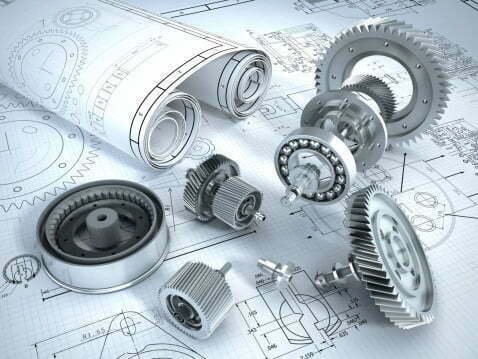 REQUEST QUOTE
REQUEST QUOTE
Transforming Robotics Using 3D-Machine Vision

What is Machine Vision?
2D-machine vision has changed mechanized assembling, applying exquisite programming calculations to the creation, examination, and control of efficiently manufactured parts. This innovation utilizes imaging to construct an all encompassing, 360-degree perspective on a section and cycle to consider all factors that go into creating the part. The reconciliation of programming and progressed modern hardware has driven actual human contact between the machine and the produced part.
Generally useful for rehashed, high-amount creation runs, machine vision gives the administrator upgraded perceivability to work on the quality, speed, and cost of creation. 2D-machine vision offers upgraded assessment by distinguishing the place of item includes, further developing the imperfection rate for quality affirmation. It expands usefulness and adaptability by quickly leading dreary developments and empowering pre-modified changeover to clump a grouping of creation steps, like subroutines in PC programming. At long last, 2D-machine vision lessens cost by these upgrades to quality and speed. The superior programmability upgrades machine execution and diminishes the human resources expected to run the machines. Better quality additionally means lower scrap, a prompt improvement to cost.

With all its problematic advantages, 2D-AI conveys a few extraordinary open doors for development. The machine makes the objective picture utilizing light. Subsequently, this approach is vulnerable to varieties in lighting conditions, for example, shadows, concealing at various seasons of day, along these lines affecting the freshness of the picture. Since it is planar, the 2D methodology is predominantly appropriate for parallel evaluation, for example, regardless of whether an element is available or whether an imperfection is available.
These difficulties make the requirement for a considerably further better imaging arrangement: 3D. Straightforward in idea, adding profundity to the 2D picture requires huge moves up to the whole interaction. Here we will layout how the third aspect expands the powerful reaction and cycle execution gains of 2D-machine vision, drawing the interaction ever nearer to the best state: zero-imperfection, in the nick of time, least expense.
Benefits of 3D-Machine Vision for Dynamic Response
The additional intricacy of joining the third aspect builds the computational burden on the processors dramatically. To address this, product suppliers have worked on their foundation, flexibility, and on-request calculation support. In equal, 5G’s development assists with moderating the handling requirement. It is not difficult to see the reason why adding the third aspect would further develop the imaging approach at the expense of added handling in light of the fact that higher measures of information take more time to process. Be that as it may, sensors catching an element’s three-layered view empowers the product to add through a flaw in the picture to make an exact picture involving the element’s situation in the other two aspects. Imaging process versatility increments with a more itemized view, lessening the machine’s reaction time.
The product and calculations gather and examine information, speeding up the reaction to a disappointment without the requirement for human intercession. The interaction eliminates critical wellsprings of human blunder and diminishes the time among sign and reaction with a more precise picture. Decreasing the reaction time draws the cycle nearer to the best state mainstay of in the nick of time creation.
Benefits of 3D-Machine Vision for System Performance
3D-machine vision empowers a quicker, more exact perspective on the pertinent component. This advantage further develops execution by finding and tending to quality disappointments. This view permits the designers to characterize or pre-program a system for evaluating the seriousness of a section honesty issue. They can upgrade the machine to check out the known wellsprings of blunder to work on working proficiency, diminishing part cost.

Adding the profundity aspect can work on the exactness of estimating and cutting, empowering a more tight assembling resilience of a cycle. Accomplishing a repeatable, tight resistance could permit a more robotized level of assembling, which diminishes the per-piece creation cost.
3D-machine vision can analyze a completed part against its Computer Aided Design (CAD) model to work on quality. Designers can foster a review succession to check basic aspects from the CAD model represented by the designing drawing or determination. Machine vision then, at that point, surveys the part against the model in-line and either supports the part or rejects it to the piece container. The additional information from the third aspect moves the examination cycle from a 2D check against the attracting to an immediate correlation among CAD and item.
Conclusion
3D-machine vision conveys improvement to assembling quality, throughput, and cost. Ideal for high-volume creation steps, 3D-AI adds profundity to the past 2D way to deal with make a total image of the part. This picture can decide the size, shape, area, and position of an imperfection, give that to illuminate a calculation to further develop handling productivity or further develop store network stock turns through checking, picking, and reordering. Hardware utilizing this troublesome innovation can ingest startling factors and snags, explore them and complete their undertakings without reconstructing.


